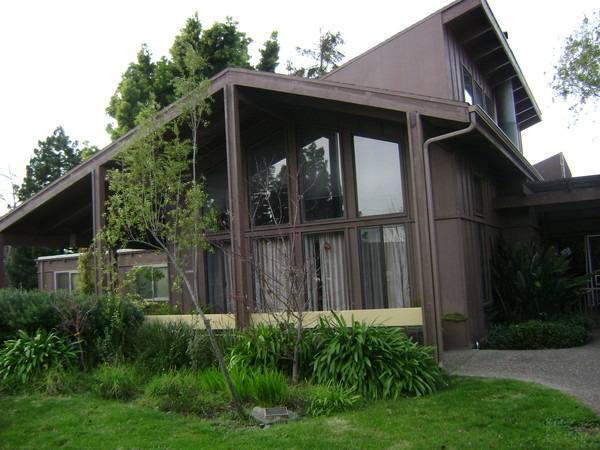Week 32: "Connecting Across the Generations"
Daniel Barash
On the first Friday of every month, we “Challah-it-Forward” to the Chaparral House, an amazing eldercare facility down the street that I’ve featured in earlier posts. Entering our seventh month(!) on this challah journey, I can look back on these visits with a bit of perspective that only comes with time.
The visits all have a distinct rhythm and ritual. When I arrive to set-up at 4:20, a small group is assembled in the living room, watching the last few minutes of a “classic movie” on the large television. These films were of course not “classic” when residents first saw them, more than 50 years ago on the big screen. I sometimes wonder what those cinematic experiences might have been like for them. How old were they? Did they go with their sweetheart? Did they order sodas and candy?
Challah, Kiddush cup, and candles.
As the final movie credits roll across the screen, Aviva always helps me place our fresh bread under the embroidered challah cover. And then, when the residents’ wheel-chairs have all been turned to create a semi-circle, the Sabbath ritual begins. I offer a hearty “Shabbat Shalom” to all that are present (usually between 7-10 residents), and then lead them in song. There is the standard Shabbat fare like “Bim Bam,” and “Lecha Dodi.” But I also always include a selection of standard songs that might have some resonance with them, songs that they can remember and relate to from their past. It’s fun to make connections between the awe of Shabbat and “Somewhere Over the Rainbow,” “What a Wonderful World,” and “Blue Skies.”
Sometimes there are definite responses from participants: one might appear to be forming the words with her mouth, another might be tapping a finger in rhythm, while another might gently clap at the end of each song. But often there is no response, rather what apears to be a hollow stare.
Looking back, my expectations about these visits have changed. When I first started back in September, I expected to be warmly received, to elicit a kind of heartfelt acknowledgement. I soon discovered that with the population that I’m visiting, it is not always clear how outwardly engaged they are. And if they are engaged internally, they might not be able to express it verbally or physically. And it’s dawned on me that with the passage of time and their growing difficulty with memory formation and recall, many individuals may be less aware of our song and challah sharings with each passing month.
While I’m not sure about the awareness of the elders, I am definitely cognizant of how Aviva is becoming much more aware with each visit. At the age of four, her memory capacity is growing ever stronger, as she is asking questions about the world and “putting the pieces together” with each new experience.
In some ways, I think Aviva is somewhat uncomfortable during our time at Chaparral. Most adults in her life actively engage with her, asking her questions, finding out what she’s interested in, participating in activities with her. Here at Chaparral, she is often, though definitely not always, met with blanks stares.
In some ways I too am uncomfortable during these visits! I think of the elders in my own circles who very well may experience the challenges of aging, both physically and cognitively. And I look even further down the road, when I and my contemporaries may personally face these challenges.
As a society, I think we don’t very often have to confront end-of-life issues on a regular basis. Part of this is due to a culture of separation; in more traditional societies, both children and elders may very well live in the same home, where the circle of life is both seen and celebrated. Today, with increasing numbers of elders living away from their families (many, I should say, receiving excellent care that directly addresses their needs, and many that are not as fortunate), I think we have a hard time relating to them, and therefore become fearful of interacting in meaningful ways.
What I have noticed on a personal level is that with each visit to Chaparral, I have become a little less fearful, and a little more emboldened to make the one-on-one connections that I’ve come to appreciate. At each month’s visit, I now make it a point to personally walk around the room and say a “Shabbat Shalom” to each resident in attendance, both at the beginning and at the end of my time there. There is something incredibly connective about physically shaking someone’s hand, looking them in the eye, and wishing them well. And though sometimes Aviva still hides behind my leg as I’m doing this, it is my hope that with each passing month, she too will become a little less fearful, and a little more emboldened to connect with these aging individuals.
A warm Shabbat Shalom to you and your famiies…




